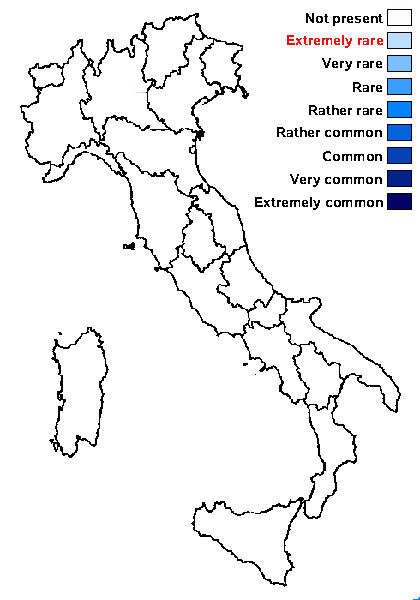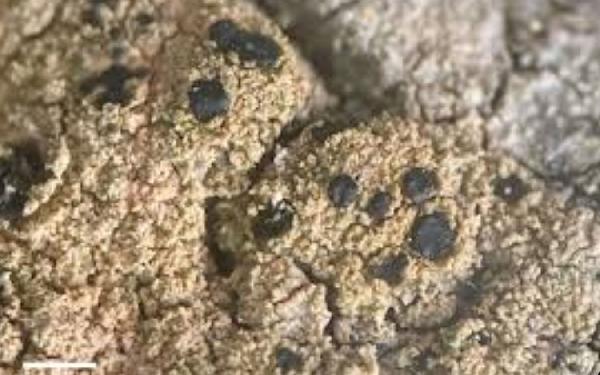Lecidella parasitica Sanderson
in Cannon & al., Revisions of British and Irish Lichens, 25: 75, 2022.
Synonyms:
Distribution:
Description: Thallus crustose, immersed in the thallus of Pyrrhospora quernea, usually very poorly evident, but heavily infected host thalli may appear darker. Apothecia lecideine, black, epruinose, 0.15-0.5(-0.6) mm across, with a mainly flat disc and a thin proper margin. Proper exciple green-yellow internally, composed of radiating hyphae; epithecium blue, K+ intensifying; hymenium c. 40 µm high, pale straw, often with reddish and blue patches; paraphyses lax, to c. 4 µm thick, the apical cells hardly swollen; hypothecium pale yellow to brown, K-. Asci 8-spored, clavate, with an intensely K/I+ blue tholus penetrated by a faintly amyloid, broadly cylindrical axial mass, and a poorly developed ocular chamber, the wall K/I-, surrounded by a K/I+ blue outer layer, approaching the Lecanora-type. Ascospores 1-celled, hyaline, ellipsoid or broadly ellipsoid, (7-)10-12 x (4-)6-7(-8) µm, some of them pointed at one end, thick-walled. Photobiont chlorococcoid. Spot tests: unknown, masked by those of the host. Chemistry: unknown.Note: a recently-described lichenicolous species, the apothecia developing on the thalli of Pyrrhospora quernea on old deciduous trees, hitherto known only from the British Isles. As the host is quite widespread in Tyrrhenian Italy, and since the apothecia may be easily confused with blackened apothecia of the host, it should be looked for in Italy.
Growth form: Crustose
Substrata: bark
Photobiont: green algae other than Trentepohlia
Reproductive strategy: mainly sexual
Most common in areas with a humid-warm climate (e.g. most of Tyrrenian Italy)

Predictive model
Growth form: Crustose
Substrata: bark
Photobiont: green algae other than Trentepohlia
Reproductive strategy: mainly sexual
Most common in areas with a humid-warm climate (e.g. most of Tyrrenian Italy)

Predictive model


